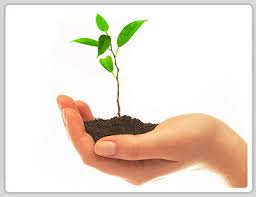Seedling Problems
?
SEEDLING PROBLEMS
and How to Avoid Them!
?
There are a few basic but strict rules for establishing seedlings that can almost never be broken.? Take a look at these typical situations and see if any of them are familiar.
?
NOT ENOUGH LIGHT
When started indoors the tall, skinny seedlings have toppled over in search of light.? Long, thin stems are too frail to support the weight of the leaves
?
Solution: It's hard to give sprouted seedlings too much light.? A fluorescent lighting situation (easily homemade or purchased commercially) or outdoor light is best.? If it's too chilly outside, consider building a homemade cold frame.? If you decide to go with fluorescent lights, keep them close but not touching the seedlings, and move the lights up (or the plants down) as they grow.? It's also common to start seeds on a windowsill and move the seedlings out as the weather becomes warmer in Spring. Studies have shown that brushing your hand lightly across the tops of the plants daily will increase the size and strength of the stems.
?
FUNGUS DISEASES
A fungus disease causes 'damping off', wilting and early death of young seedlings.
?
Solution: Don't wet the leaves and stems. Allow proper air circulation by removing the plastic covers once the seedlings have emerged.? Cinnamon powder and chamomile tea have been suggested as home remedies to help keep seedlings from damping off.
?
NOT ENOUGH MOISTURE
Seedlings dry out, wilt, and eventually topple over.? Even if you're able to get them to bounce back after watering, seedlings may remain in a weakened state.? When watering seedlings, use tepid (rather than frigid) tap water to help accelerate growth.
?
Solution: Care must be taken at this impressionable stage to closely monitor moisture and keep it uniform.
?
TOO HOT
The clear plastic covers are great for keeping moisture in but can scorch seedlings left in the sun.? Seedlings moved into the garden from indoors don't even last a day.
?
Solution: If your seedlings were started indoors with a kit, remove the covers after germination occurs (when seedlings appear).? Seedlings must be acclimated to outdoor conditions more and more each day until they're ready to go into the garden.? This is called 'hardening off' and allows the plants to slowly begin tolerating outdoor conditions.? Many gardeners use cold-frames to harden off seedlings.
?
NOT ENOUGH SPACE
The seedling shave developed true leaves, and you've applied a weakened liquid fertilizer at half strength.? Growing quickly, plants become root bound and stunted in the confines of the tiny space.
?
Solution: After the second pair of true leaves have formed, the seedling can be transplanted to the garden or to a larger container.? The container doesn't have to be beautiful, but it should have drainage holes.? Used containers for transplants could include Styrofoam coffee cups, yogurt containers and cans.? In addition, consider discarded prescription bottles for seed storage and egg cartons or transparent covered containers from the grocer deli for starting new groups of seedlings.
?
SEEDLINGS STEMS BROKEN
Tender stems snap in two when transplanted to larger containers or the garden.
?
Solution: Handle seedlings by the leaves rather than the stems when transplanting.? If a leaf breaks, it's no big deal, but if the stem breaks, the seedling is lost.
?
Seedlings need high humidity until germinated, bright light to keep them strong and stocky, uniform moisture, good air circulation, a period of gradual acclimation to the garden if started indoors, and careful handling during transplanting.
?

